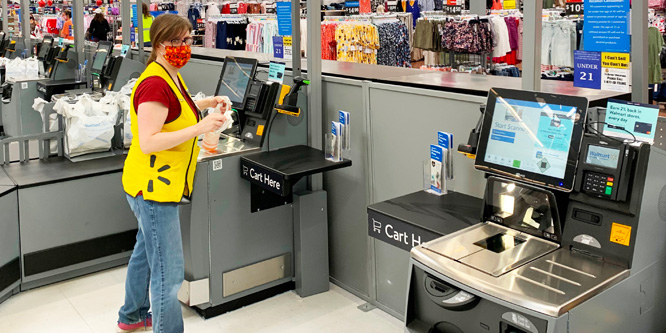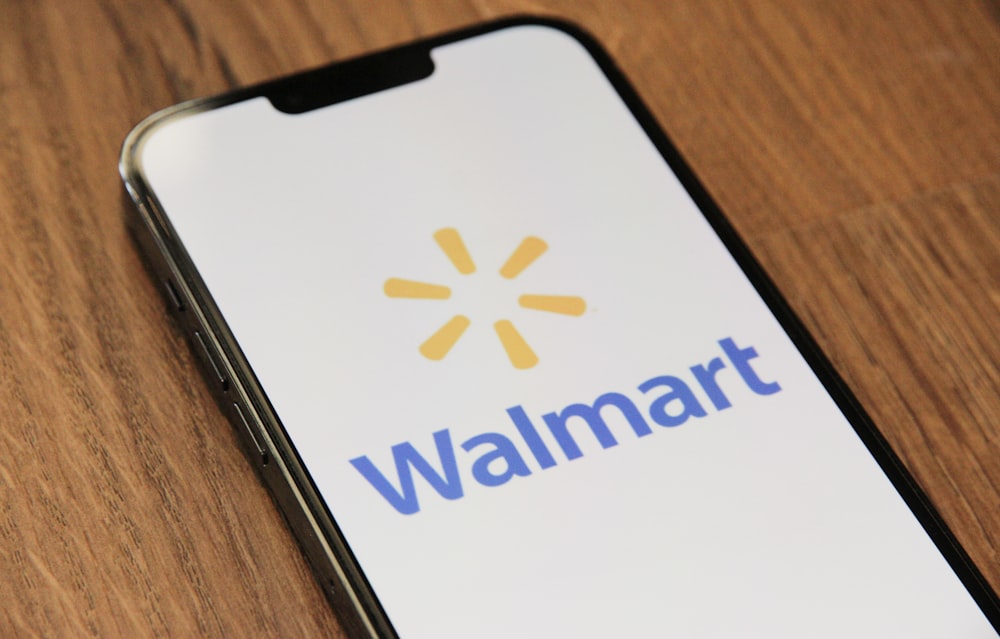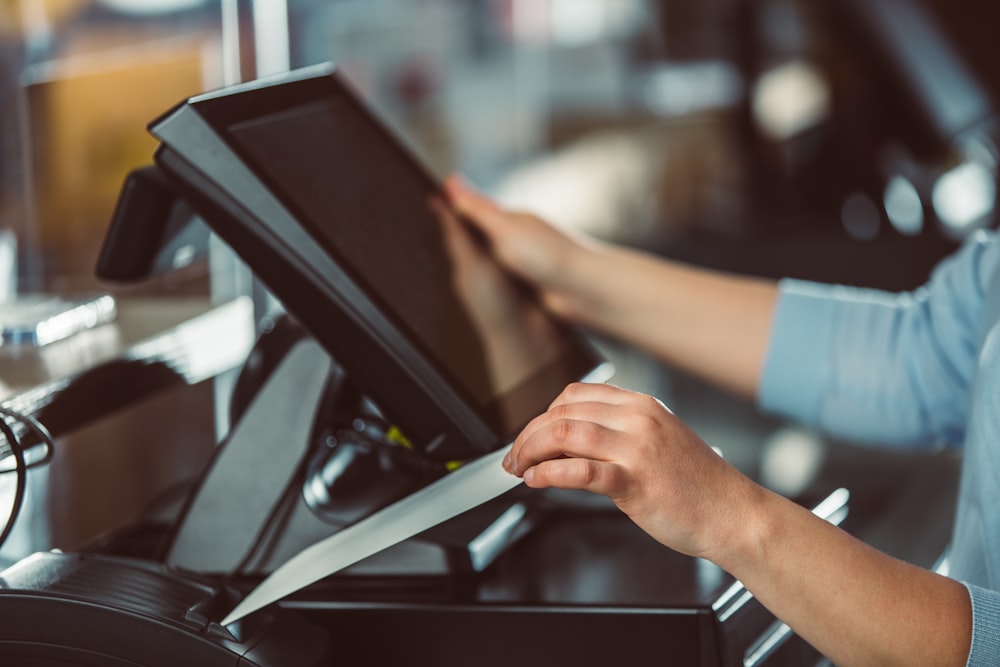
Photo: Walmart
Does Walmart Self-Checkout Make Harmful Theft Easy?
As theft from stores continues to be a big problem for Walmart, one report says both employees and customers are pointing to one factor as a particular enabler for shoplifters. Walmart self-checkout makes it easier for for people to steal from the store.
Walmart Self-Checkout Woes
More than 100 customers and employees (both current and former) told Business Insider that, as a measure to reduce shrink, Walmart needs to stop relying on self-checkout. That came in response to Walmart CEO Doug McMillon telling CNBC earlier this month that the rate of shrink has reached a point where it could lead to store closures. While Walmart did not comment on the ratio of cashiers to self-checkout lanes in its stores, an anonymous employee from a store in Spokane, WA told Insider that the store had drastically cut down on manned checkout lanes in favor of self-checkout.
In the past, Walmart has tried implementing a store solely dedicated to self-checkout only And Amazon has begun seeing signs of success with their Amazon Fresh stores that have no cashiers or registers. Clearly, self-checkout theft needs to be addressed because register-less shopping is becoming a norm. And with all the different types of consumers, Walmart self-checkout is an important feature that should be present in every store belonging to the brand name retailer.
Walmart Self-Checkout is Not the Only Problem
The phenomenon of defrauding self-checkouts to shoplift is hardly new, and by 2018 the practice had grown so widespread that The Atlantic reported a lingo sprouting up among shoplifters to describe different tricks. Unabashed shoplifters use the term “the banana trick” for ringing up an expensive bulk item as a cheaper one and refer to price tag swapping as “the switcheroo.”
Reports have posited that up to 20 percent of people who use self-checkout have stolen something while using it.
In the last year there have been widely reported instances of even newer unattended self-checkout solutions being prone to theft.
For instance, Wegmans earlier this year, due to an unsustainable rate of shoplifting, shut down its SCAN app, which allowed shoppers to scan products and leave the store without visiting a register.
However rampant petty theft is not the only reason for the uptick in shrink numbers over the past few years. Organized retail crime has also been widely reported as having reached epidemic levels. Organized retail crime consists of operatives working for criminal rings stealing large amounts of product from retailers, sometimes through violent brute force attacks, so that the rings can resell the product online.
Organized retail crime experienced a spike between 2021 and 2022, according to the U.S. Chamber of Commerce. In 2020, it was already up 50 percent over five years, costing retailers $700,000 per $1 billion in sales.
Walmart self-checkout is a convenient option for tech-savvy shoppers who know what they want, buy a small amount of items, and know how to get in and out of the store quickly.
- Walmart rolled out self-checkout to streamline operations and reduce labor needs — but employees and customers say it’s causing a surge in theft – Business Insider
- Rising thefts at Walmart could lead to price jumps, store closures, CEO says – CNBC
- Shoplifters force Wegmans to pull the plug on its self-scanning app – RetailWire
- The Banana Trick and Other Acts of Self-Checkout Thievery – The Atlantic
- Organized Retail Theft 101: What Is It and What Can Be Done About It? – U.S. Chamber of Commerce
Discussion Questions
DISCUSSION QUESTIONS: How much of a role do you think self-checkout plays in the overall shrink problem? How can retailers balance the value of self-checkout with its downside?




There’s no question that retail shrink is a growing problem — but I don’t think we can blame it all on self-checkout. The fact is self-checkout is pervasive in grocery retailing, and that will only increase over time. Not only does self-checkout directly impact retailers’ labor costs (fewer cashiers), it is the preferred method of transacting a sale for many shoppers. Ultimately, retailers need to do a better job of monitoring their self-checkout lanes and that should help minimize the theft.
Self-checkout is one factor in increasing shrink but there are others that contribute as much or more, such as organized retail theft. Shutting down a store because of self-checkout theft sounds dramatic. Why not resurrect manned check-out? And if shrink is that large in a specific store, isn’t it indicative of a larger-scale problem?
Retail shrink seems to be pretty constant. And the primary culprits are employees and customers stealing merchandise. Organized crime plays a lesser role in the top 3. Ironically, all the excellent technologies we use manage to keep it stable, rather than reduce it.
I’d love to see more details about how self-checkout is modeled. How much does it cost? Payroll savings? Break-even time on initial investment? Long-term profitability projection? And then, shortage assumptions short and long term? How far off were the shortage assumptions and how do the staffing and payroll assumptions have to be tweaked to make it all work again?
If you provide an easy method to steal, people will take advantage of the opportunity. Self-checkout (SCO) works with some demographics, but not all. The SCO itself is frequently not intuitive and missing scans is not uncommon. I’m a big believer in RFID and 2-D scanning as both these technologies can do rapid, all-in-one reads without passing each item over a laser scanner. That would certainly reduce theft, but this is a numbers game. As the cost of people increases, SCO becomes more of a standard.
There are video analytics solutions, in grocery anyway, that can identify sweethearting by cashiers. There should be a way to tweak the same technology to identify “the banana trick” and other techniques. One more thought: Retailers need to lobby for better legislation to combat shoplifting. Many retailers with self checkout have a staff member there to help shoppers. Shouldn’t they also be empowered to stop stealing as it happens?
It is a funny thing. I can walk into Meijer stores and Jewel stores and notice they have lots of shoppers utilizing self-checkout. However those stores always utilize store staff in those areas. Not just one staff person, but usually four or more. The big register lanes are still rocking, and the customers who don’t want to wait in those long lines are happy. If the problem gets horrid, the only thing to do would be to install store walkers. I’d call them “customer helpers.”
It is startling that one study cited that shoppers are four times more likely to steal from a self-check terminal than a human cashier. So bad actors will continue to take advantage of this technology as a means of committing shoplifting “anonymously.” However the trade off is worth the investment as the labor shortage remains and the number of cashiers continues to decline.
Self-checkout will continue to evolve, RFID will become more affordable, and new methods of reducing theft will emerge. Patience and diligence are critical — I suggest retailers stay the course and implement what they can with training, additional cameras, technology, and other available safeguards to thwart would-be thieves.
People are walking in the front door with empty bags, filling them or filling carts and walking out. I think self-checkout theft would pale in comparison to the scale of those kinds of thefts. Both need to be addressed.
Lower labor costs from self-checkout outweighs shrink for most retailers. By introducing additional security measures, retailers can recoup some of their losses. There are some factors to consider as well — specifically in-store format and locations with higher crime or organized crime operations. Smart retailers can map these out as needed. Some of the highest shrink comes from short term employees and embezzlement. Self-checkout comes with security measures such as weight metrics, cameras and attendants. These can be extended further at the cost of convenience. Additional security measures can be mapped out and new camera based visual product recognition tech is one place to experiment.
Retail shrink has been an issue for decades and people will always find ways to steal unfortunately. I have always seen a few attendants manning the self-checkouts at Walmart without any issues. Technology is always progressing with better options to catch thieves.
Studies from the Loss Prevention Research Council at the University of Florida and by retailers like Wegmans prove that self-checkout is a massive source of shrink for retailers. I had yet to see the stat that 20 percent of customers who use self-checkout steal something. I don’t know if I should be surprised or not. The other side of this is customers like self-checkout, so how do you find balance? More customer service team members in the self-checkout areas would be a no-brainer. As we learn more about the common methods people use to take advantage of self-checkout, better stores and solution providers can design processes and tools to detect those patterns and help the store teams identify likely offenders and suspicious transactions.
Some retailers think self-checkout = no staff. Not true, as evidenced by this article and the stats contained in it. Smart retailers leverage self-checkout strategically, and staff it with the appropriate number of associates who can effectively and profitably make it work.
I watched someone shoplift from a Goodwill store two weeks ago. Local jurisdictions seem to take a pretty hands-off attitude toward retail theft and as long as that’s the case, shrink will continue to grow. Stores will have to focus more on prevention if they don’t get the support of local police.
The theft triangle has been around for a long time. There are three sides to it: motivation, opportunity, and lack of detection. There is little that retailers can do to impact motivation. Adding self-checkouts increases the opportunity and decreases the likelihood of detection.
The question is, how does the retailer mitigate those two? Most have done it by careful placement of the self-checkouts, adding staff to oversee the area, and by use of technology to track the weight of the item being scanned when they are placed in the bagging area to ensure that it matches what the system says it should.
Overall, I’m just not a big fan of self-checkout. Not only does it contribute to shrink, it also often just isn’t more efficient for consumers than having a cashier. There are other tech-enabled ways of getting customers paid up that are both more protective of product and faster.
Our ECR group have been studying self-checkout for over a decade, publishing data on the true scale and extent of losses. We have just published this month a report on what those on the front line supervising self checkouts think about self-checkouts. Their insights and voice point retailers towards the critical role that design, training, technology, workforce planning and monitoring can and does play in increasing participation, improving scan accuracy, reducing walkaways and making the self checkout area a safer place for them to work.
Thanks for pointing out your study, Colin. This is very interesting and revealing.
Shrink is a big, and growing, issue for retail. Self-checkout accounts for some of the loss but so do many other areas. There are preventative measures retailers can put in place at self-checkouts such as random checks, recording customers, better video surveillance, having to scan or have receipts checked to exit, and so forth. The problem is that most of these increase friction which customers hate. For example, Sainsbury’s in the UK has recently introduced a scan receipt to exit the store policy in more shops and it has attracted a lot of negative reviews and press criticism.
The sad and aggravating tale of self-checkout continues. Theft has always been a problem. Now it is getting worse probably because of inflation and high food prices.
How to fix the problem? Forget about more training, more cameras and other dubious solutions. Just take out self-checkout terminals and hire more cashiers. Most shoppers do not like self-checkout despite what some questionable surveys say.
“Why ask us (aren’t there more knowledgeable estimates available)?” is my first thought, but since we were asked: I think it’s much smaller than people think; my reasoning is pretty simple: it’s much easier to stuff something under your coat, or just grab it and run out the door than spend time at self-check, calling attention to yourself (and you still have to buy something there, right?). But it likely varies by store/company since, as we noted a few weeks ago, there are companies that do self-check well, and many that don’t. And comparing individual to organized theft, the discrepancy between swapping a banana and hijacking a pallet — or truckload — of them is even more stark.
The best suggestion I can offer, is also the easiest: make sure there’s always a reasonable balance of competent attendants to stations … which implicitly rules out a common mistake: no attendant at all.
Most retailers implemented self-checkouts to cut down on staffing costs. In my opinion, completely eliminating checkout counters and only relying on self-checkouts would be the wrong approach. Since it’s impossible to track down people who exploit self-scanning services, a better solution instead can be, making self-check-out available for only loyal customers who have access to membership programs.
On another note, is Walmart solely shutting down stores because of theft? I believe theft cannot be the only reason here. It’s also possible that Walmart has identified its least-performing stores and then has taken a decision to close them.